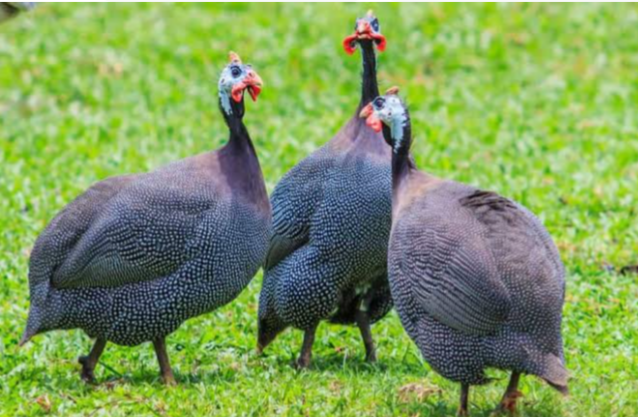
Guineafowl is a Poultry bird sometimes called “pet speckled hens”, “pintades” , “Gleanies” or “original fowl”. They are also referred to as guineas. It belong to the birds Phylum : Chordata, Class : Aves, family : Numididae, order : Galliformes, and it has four genera namely Numida, Guttera, Agelastes and Acryllium
Guineas are Galliformes, a group including all fowl-like birds, but have their own kind of bird family. They are game birds that are popular among small and backyard flock farmers. They are more active than fowl and not as easily tamed. They do retain some of their wild behavior. A day old guinea chick to 12 weeks old is called a keet, pullets is the young females and cockerels are the young males. Both the male and female guineas look exactly the same. But the males are bigger in size than the females. Also, the males possesses bigger helmet and wattles than the females. The helmet is the crown on the head of the guineas
There are many kinds of guinea fowl: the Pearl (or Helmeted Pearl) guineas are the most known and domesticated. Other varieties include the White,
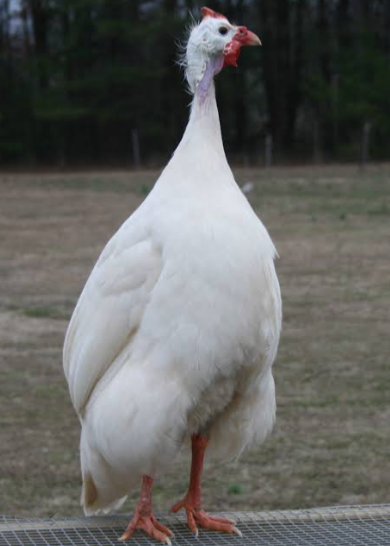
Royal Purple,
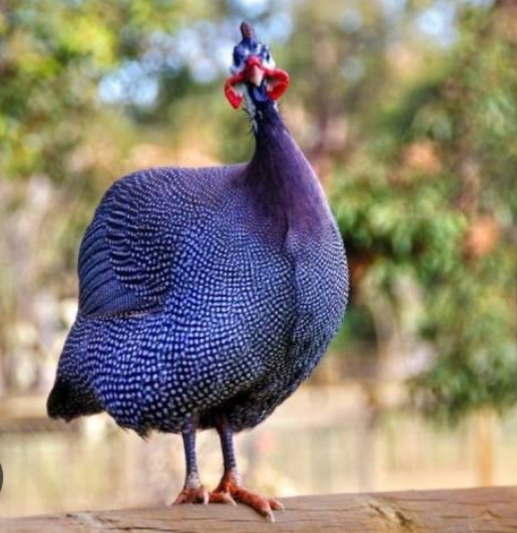
and Lavender guinea fowl.
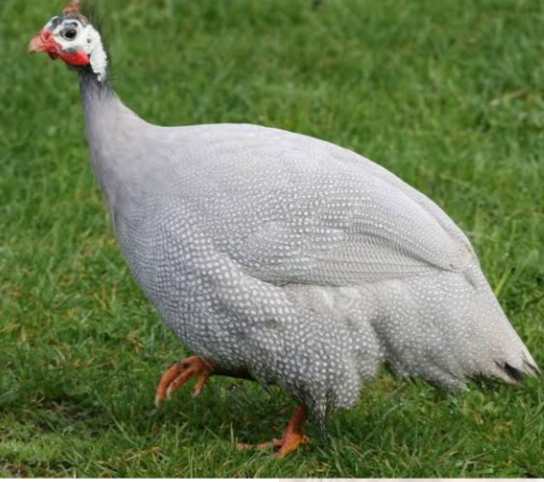
The guineas – have different feather colours patterns.
The full pearled has white all over it’s feathers
The partial pearled has few white spot on its feathers. The solid colour has no spot. And lastly the pied which has patches of white at the fronts and wings.
REASONS PEOPLE RAISE GUINEAS
There are many reasons why people raise guineas. Such reasons include:
1. SERVE AS WATCHDOGS OR SECURITY: Guinea fowl is a bird that produce a lot of noise. They produce sounds of alarm whenever anything unusual occurs on the farm. Some people use them as farmyard “watchdogs.” because their noise calls for alertness to the farmers. Therefore, it is an effective tool for protecting the farm. While some people see their noise as a nuisance, The loud noise of the guineas also chases away rodents from invading the area.
2. PEST CONTROL: Guinea fowl is also used for pest control. Flocks of guineas are effective in killing and eat mice and small rats. In addition, guinea fowl can be used to control insects. Wild and domestic guineas eat mainly insects, they consume insects without harming the plants like vegetables or flowers. Such insects they control include wood ticks, grasshoppers, flies, and crickets. And also deer ticks that causes Lyme disease to farmers. Guinea fowl also eat slugs, and flocks have been known to attack snakes. This brings about the reasons why farmers used them as organic form of pest control.
3. SOURCE OF FOOD: Guinea fowl are good source of protein. They can be raised for meat and egg production. Their meat is lean and tender and tastes like meat of wild game. The meat is rich in essential amino acids. Even though their eggs are smaller than other poultry birds eggs, they are edible and taste nice.
4. DECORATION PURPOSES: Pearl feathers of guineas are often used for decorative purposes. They come in spotted white and black colours.
GUINEA FOWL FARMING
MANAGEMENT PRACTICES IN GUINEA FOWL FARMING
1. SYSTEMS OF FARMING : The three systems of farming can be used for raising guineas. They can be raised under intensive, semi intensive and extensive system. Guineas are birds that crosses their boundaries when on range. They also produce a lot of noise that can disturb the community compared to other poultry birds.
To keep them from wandering about, intensive system is used where enclosed buildings are provided for them. . Guineas are able to fly at a very early age, and they become strong fliers as they age. Therefore, confining them for some times coupled with feather clipping should be carried out. Guineas are also very good runners and prefer to move on foot, including when escaping from predators.
2. HOUSING : Guinea fowl are often left to fend for themselves. It is also important to provide them shelter to protect them from harsh weather such as high winds, rain, cold, sun, and Predators. Also shelter is provided to protect them from theft. The shelter can be a building for intensive or semi intensive purposes or a cage where they sleep at night.
Guineas should be provided plenty of room (2 to 3 sq. ft. per guinea). The more room the guineas have, the lesser they become stressed. The floor of the pen should be covered with an absorbent bedding material such as wood shavings, paddy husk, groundnut husk or chopped hay or straw. Saw dust should not be used as it causes respiratory problems among birds. Guineas prefer to seat on Perches to rest. They hate being touched. And they prefer to roost on top of tall trees. Therefore, Perches should be provided in their pen for them to roost.
In the guinea pen, nest boxes should be provided especially for guineas raised for egg production. To prevent guinea hens from laying eggs in hidden nests when roaming, they should be kept in confinement from morning till noon each day so that they would lay eggs in the nest boxes.
2. FEEDING: Adult guineas forage for themselves and get most of their nutrition requirements as they roam about. They consume a variety of insects and arachnids such as flies, locusts, scorpions, mosquitoes, ticks, beetles, weed seeds, slugs, worms, caterpillars, greens such as grasses, weeds, wheat, sorghum, vegetation, millet grain and will ignore whole corn kernels. They should be provided clean water at all times especially the keets.
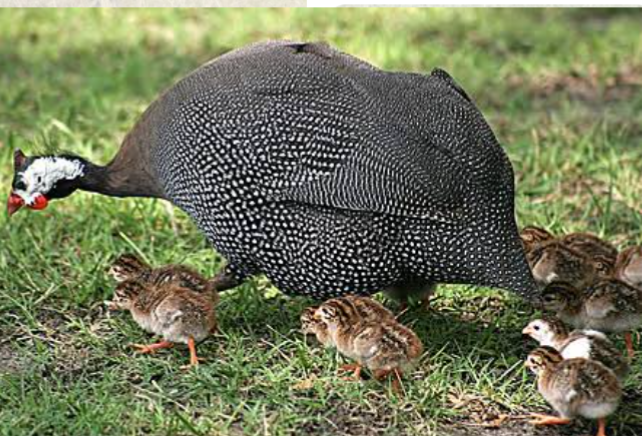
Guineas can also be fed a commercial poultry feed that lacks medication. Guineas require diets rich in protein. Keets require much protein ration than every other stages of growth. Poultry starter feed can be fed to the keets due to its high protein content. The protein level decreases with age. After eight weeks, the keets can be fed with layer mash. Guineas feed mash can be in the form of crumbles but not pellet. Guineas also like pecking on greens. Greens not consumed should be remove on daily bases to prevent mold growth.
3. EGG PRODUCTION AND HATCHING TO PRODUCE KEETS
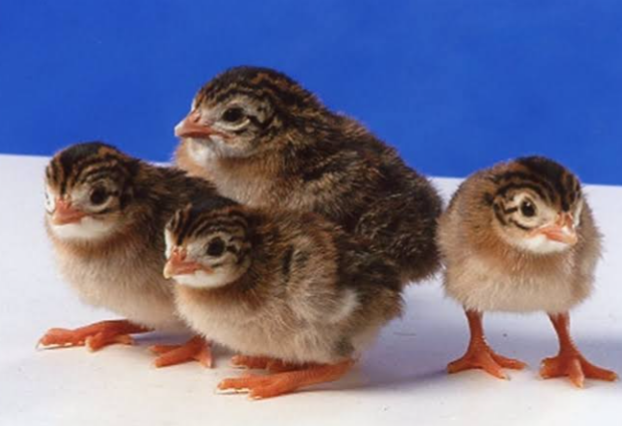
Guinea fowls in the wild and domesticated ones mate in pairs especially during their breeding season when they will search for hidden nesting sites. When raising flocks of guineas outdoor, one male can service four to five females. But when confined one male can service six to eight females. Egg laying start in March or April till October. The eggs are smaller and have thicker shells than fowl eggs. A hen may lay 100 or more eggs per year under good management condition. Breeders hen will not brood if the eggs laid is less than 30 eggs.
The incubation period for guinea eggs is 26 to 28 days, similar to the incubation period for turkeys. While in fowl, the incubation period is 21 days. Candling of guinea eggs is difficult due to its thickness until the eggs reach10 days of incubation before candling can be done. Broody fowls can be employed to hatch guinea eggs or use of incubators in hatcheries. Guinea hens do not always make good mothers. Therefore, fowl hens can still be employed to tend to the keets.
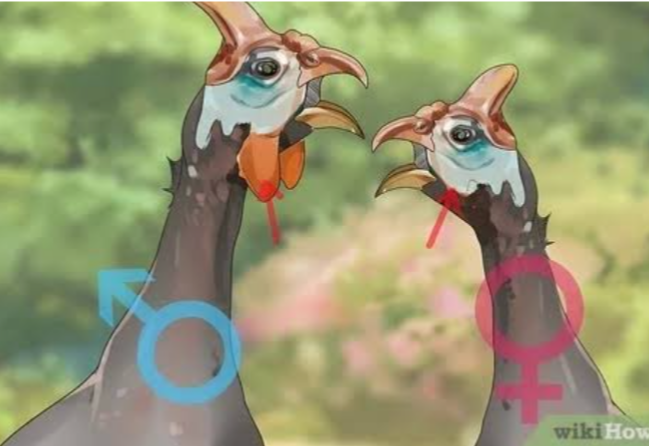
Guineas do not like being touched. When an egg(s ) is removed from the nest, the laying hen will make nest somewhere else to continue laying. While in the wild, the guinea Cock do help in tending the young keets during the day by keeping them warm and providing them food. Atimes, more than one cock helps raise the young.
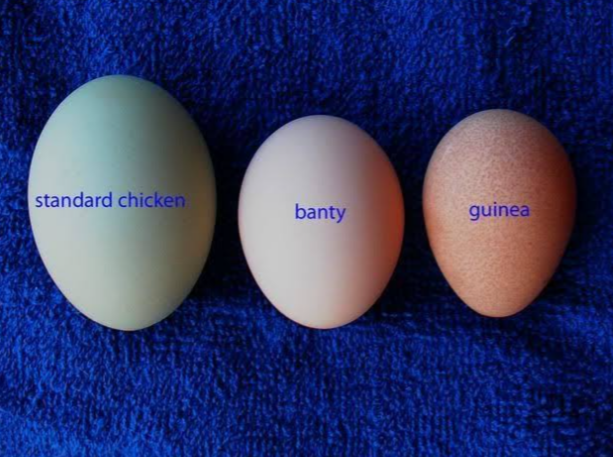
TERMINOLOGIES IN GUINEA FOWL PRODUCTION
-Guinea Cock : Adult male guinea fowl
–Guinea hen : adult female guinea fowl
–Guinea pullet: female guinea fowl under one year of age
–Guinea cockerel : male guinea fowl under one year of age
–Keet : young (baby) guinea fowl
